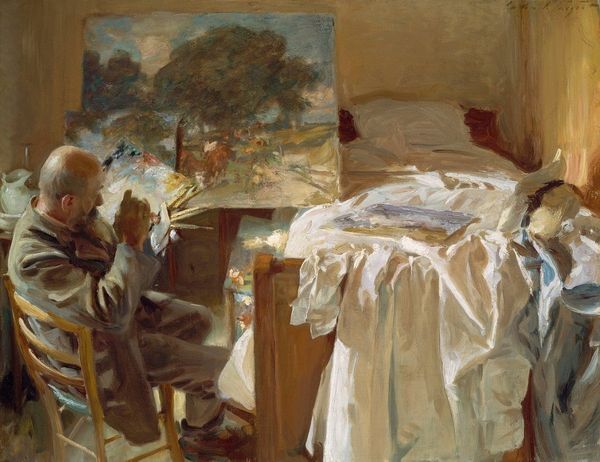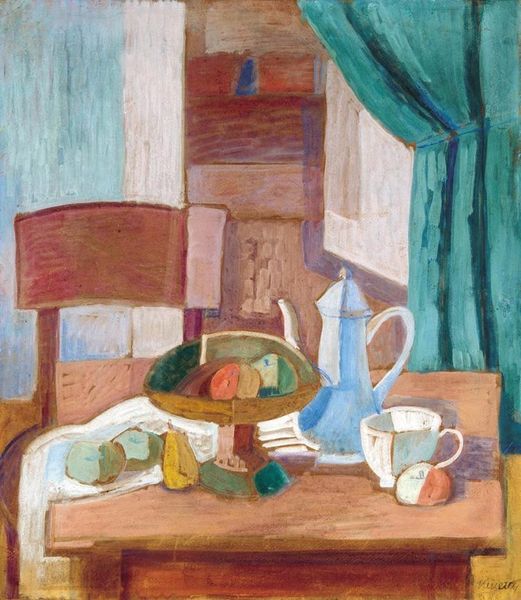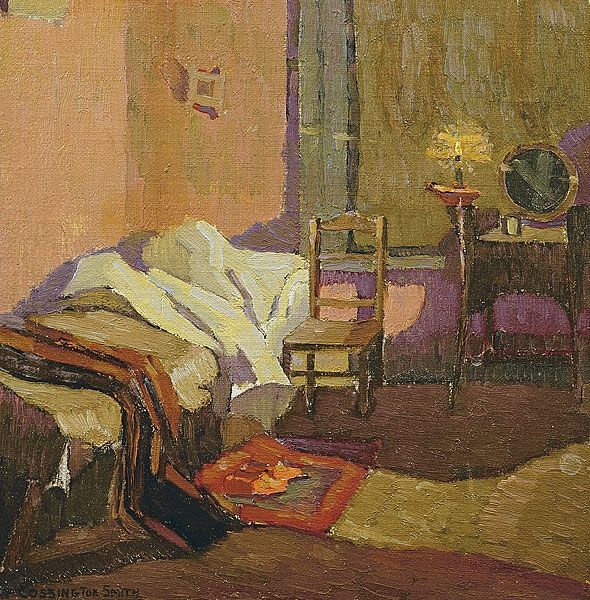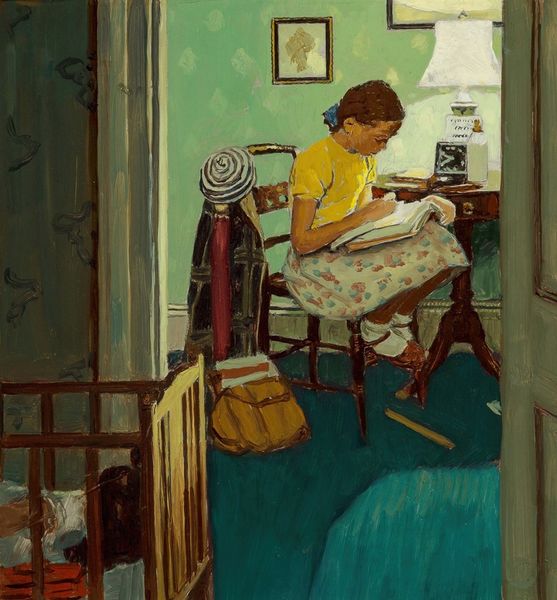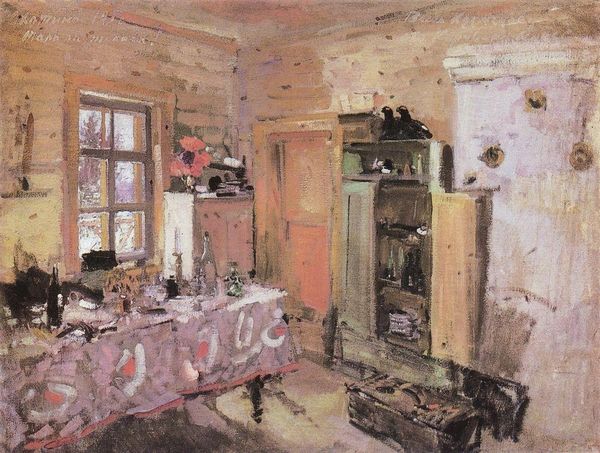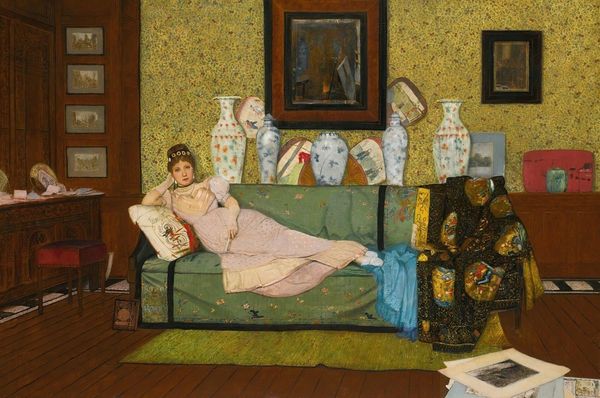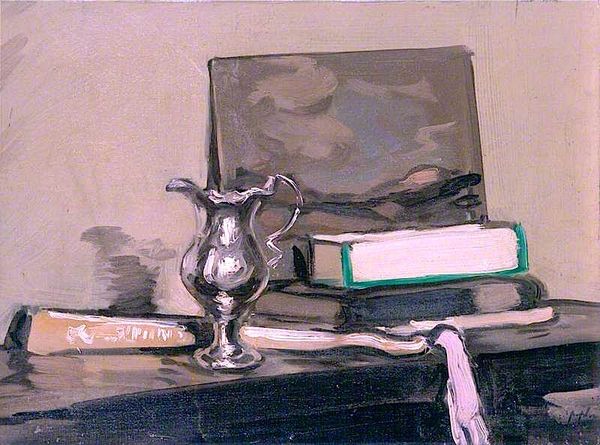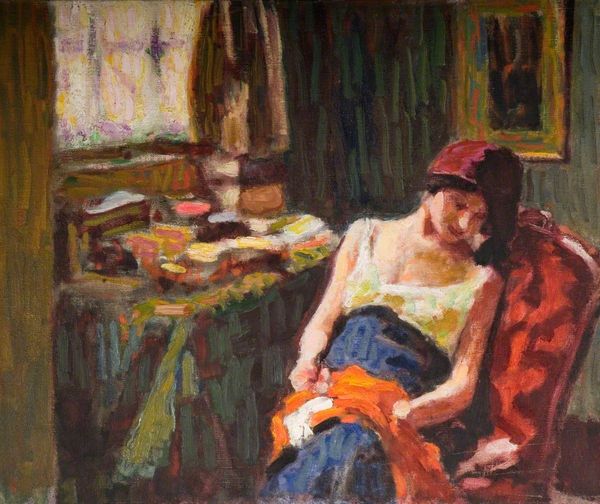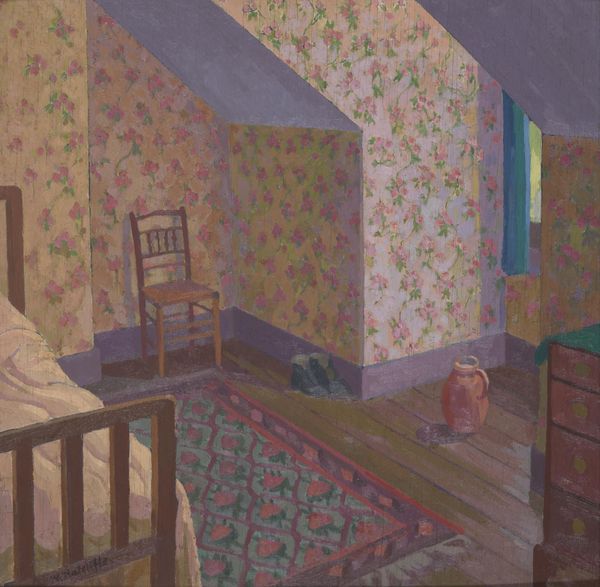
Copyright: Public domain
Curator: "My Work Room, Cassel" painted in 1917, by William Orpen... what a jumble. I'm immediately intrigued. It's like walking into a painter’s life mid-thought, or maybe post-battle with creativity. Editor: It's certainly... unstaged. You know, for an oil painting. What jumps out at me is the sheer accumulation of stuff—a bed overflowing with what looks like military attire, painting paraphernalia casually strewn about. The composition really emphasizes the labor of making art. Curator: Exactly. But there's a vulnerability here, don't you think? The painting feels like a peek behind the curtain. All that unmade chaos is juxtaposed against, and amplified by, what must have been Orpen's intense wartime portraits and landscapes. It shows us what went in to his practice. Editor: That resonates with me. We’re talking about a work produced during wartime, where materials themselves become intensely charged and scarce. I’m struck by what those specific choices of what to paint must have symbolized, and what the accumulation of them could have meant within the larger context of that world. Curator: I feel like he’s also telling us something about inspiration. Like ideas can come from mess, or that, perhaps more subtly, our materials ground our creativity. It's like a snapshot of controlled chaos that ultimately creates beauty. The fur throws me though. What is *that* doing here? Editor: A hide could refer to material culture and maybe status. But even then, the contrast between its animal rawness and Orpen's tools and crafted oil paintings is what draws my attention. Perhaps a commentary on natural and human inputs of creating an artwork. Curator: That’s really interesting. For me, the painting embodies the liminal space of being a creative, the borderland where mess is order and contemplation gets mistaken for idleness. Editor: Looking closely at this room as a process itself does reframe things, really getting us thinking of materiality as both influence, and consequence, as we conclude our reflection.
Comments
No comments
Be the first to comment and join the conversation on the ultimate creative platform.
